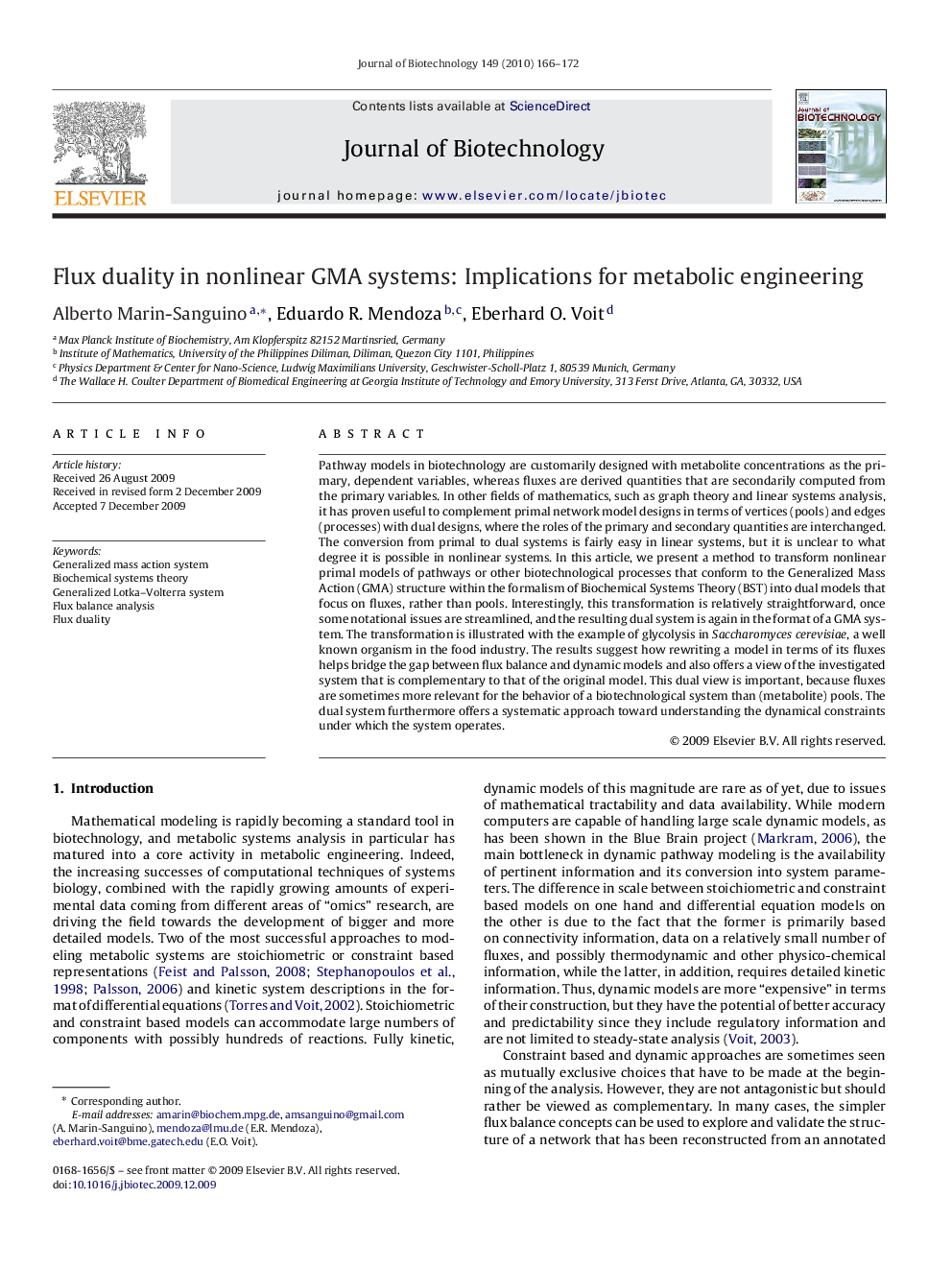| Article ID | Journal | Published Year | Pages | File Type |
|---|---|---|---|---|
| 24221 | Journal of Biotechnology | 2010 | 7 Pages |
Pathway models in biotechnology are customarily designed with metabolite concentrations as the primary, dependent variables, whereas fluxes are derived quantities that are secondarily computed from the primary variables. In other fields of mathematics, such as graph theory and linear systems analysis, it has proven useful to complement primal network model designs in terms of vertices (pools) and edges (processes) with dual designs, where the roles of the primary and secondary quantities are interchanged. The conversion from primal to dual systems is fairly easy in linear systems, but it is unclear to what degree it is possible in nonlinear systems. In this article, we present a method to transform nonlinear primal models of pathways or other biotechnological processes that conform to the Generalized Mass Action (GMA) structure within the formalism of Biochemical Systems Theory (BST) into dual models that focus on fluxes, rather than pools. Interestingly, this transformation is relatively straightforward, once some notational issues are streamlined, and the resulting dual system is again in the format of a GMA system. The transformation is illustrated with the example of glycolysis in Saccharomyces cerevisiae, a well known organism in the food industry. The results suggest how rewriting a model in terms of its fluxes helps bridge the gap between flux balance and dynamic models and also offers a view of the investigated system that is complementary to that of the original model. This dual view is important, because fluxes are sometimes more relevant for the behavior of a biotechnological system than (metabolite) pools. The dual system furthermore offers a systematic approach toward understanding the dynamical constraints under which the system operates.
